
Once a spectrum of the capital markets only accessible to institutional investors, Emerging Market stocks have now become a mainstay in many portfolios’ international allocation. Perhaps the most ubiquitous of vehicles for this particular exposure over the years, and one of the oldest exchange-traded funds in the space, is the iShares MSCI Emerging Markets ETF (EEM). While a variety of ETF products have been launched in recent years to meet investor demand for regional diversification outside of the United States and developed international markets, EEM is often the top-of-mind product for investors.
Over the past five years, investor interest lately is at a near all-time low in Google Trends for the finance category. Given the recent streak of underperformance in this space, it is not surprising to see these data.
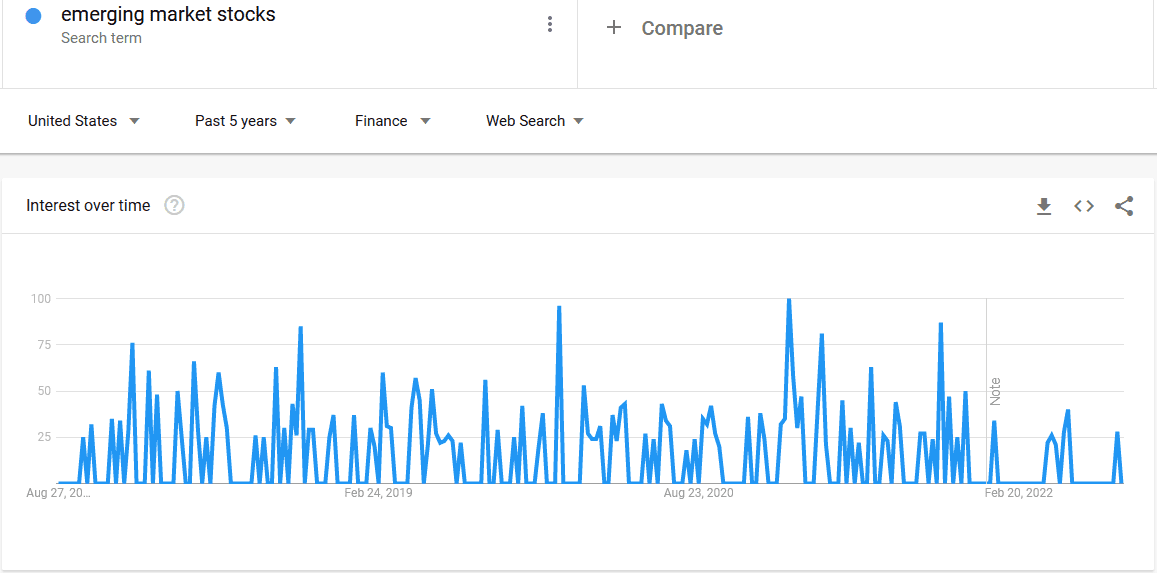
*Data via Google Trends 8/24/22
In our previous post, we highlighted the differences in the weighted overlap between the ACWI ex-US ETF (ACWX) and the ACWI ETF (ACWI). For this work, we are comparing the weighted overlap between EEM and ACWX. As of August, the weighted overlap in the holdings of EEM and ACWX currently stands at 29%. With that being such a small percentage of the international equity markets, it stands to reason that investors’ interest in utilizing such a vehicle to diversify further away from international markets is warranted. Note that 81.7% of EEM’s holdings are also located in ACWX; however, since emerging markets are a small weighting compared to developed markets, this effect is muted in the weighted overlap of just 29%.
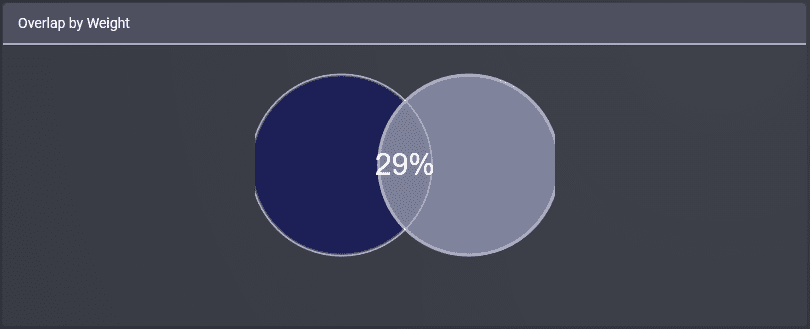
*Data via ETFRC.com as of 8/24/22

*Data via ETFRC.com as of 8/24/22
What is significant about the difference in composition of the top ten holdings of each fund is that EEM’s weight in the top ten holdings is more than double that of ACWX, with a 22.90% weight vs. ACWX’s 10.91%. Additionally, both funds share the same top holding of Taiwan Semiconductor; however, it’s at a much higher weight of 6.41% in EEM vs. 1.84% for ACWX. There is a much higher concentration risk in EEM compared to ACWX.

*Data via fundvisualizer.com as of 7/29/22
Regarding sector weights, there are some noteworthy deviations from ACWX. Technology is the largest overweight in EEM at 20.02%, compared to 11.58% for ACWX. Health Care and Industrials are also significant underweights at 4.29% and 5.68%, respectively, compared to ACWX’s 9.96% and 12.07%, respectively.
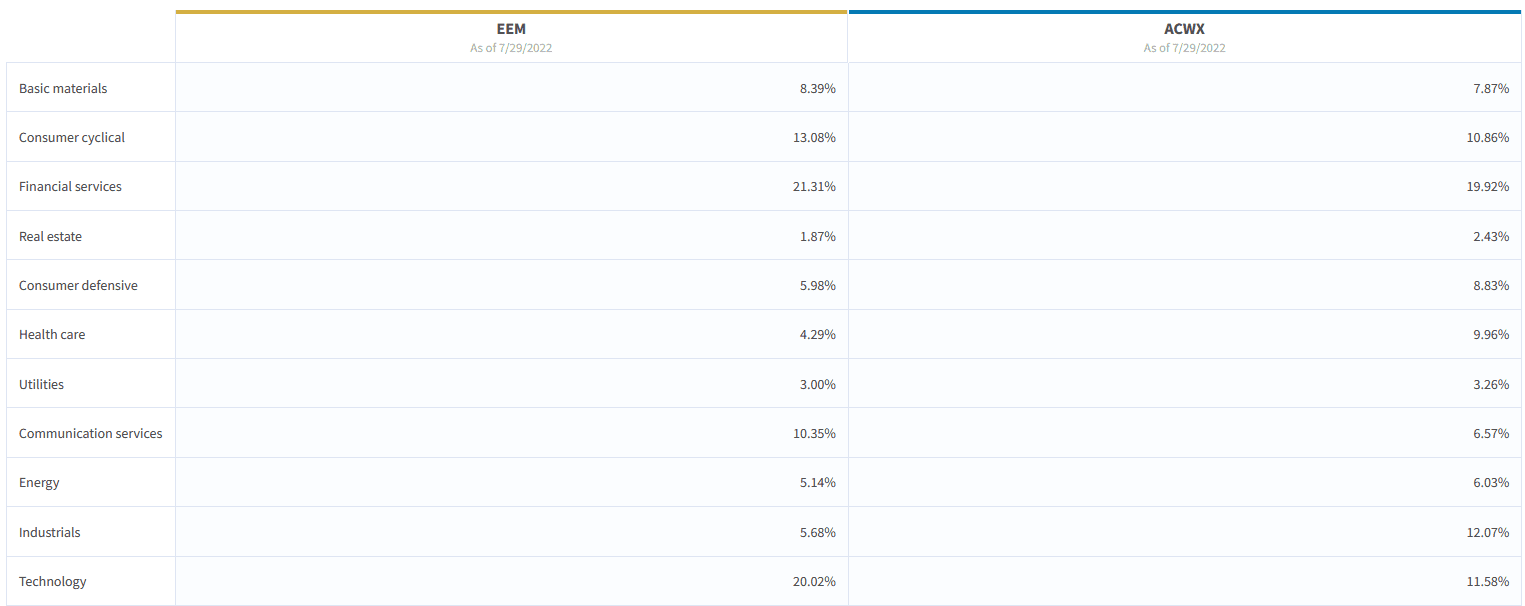
*Data via fundvisualizer.com as of 7/29/22
With regards to size and style, both EEM and ACWX maintain similar weights across all style boxes, with the exception of Large Cap Blend, with a higher weighting in this category for EEM compared to ACWX.
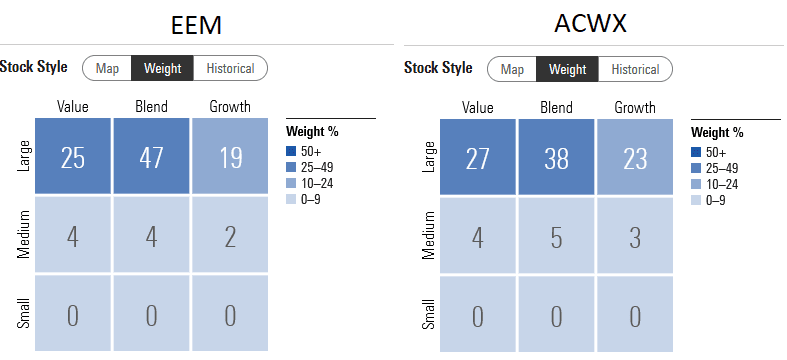
*Data via Morningstar 8/25/22
While size and style allocations might be quite similar, the weightings in the top ten countries are significantly different. Notice the 28.89% weighting in China for EEM compared to ACWX’s 8.34%. Additionally, EEM’s top country weight is more than twice that of ACWX, magnifying the single-country risk for EEM.

*Data via etfdb.com as of 8/25/22
Since 2009, EEM’s performance has tracked largely in line with ACWX. However, EEM has only outperformed ACWX in six of the last fourteen years, with the bulk of that outperformance coming from 2009 and 2017.

*Data via portfoliovisualizer.com as of 7/29/22
Prior to 2013, drawdowns for EEM have tended to track closely with ACWX. In years after, EEM’s drawdowns have tended to be historically deeper and take longer to recover, most notably in the 2013-2017 timeframe. Intuitively this makes sense, as ACWX has a significantly higher allocation to developed markets that’s helped buffer a portion of the drawdown.
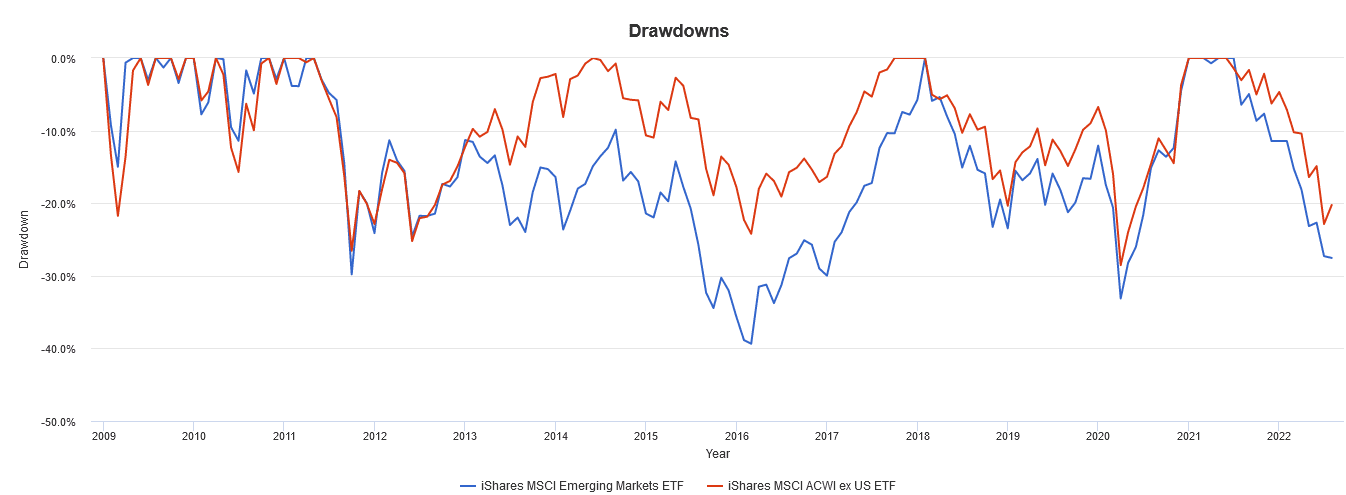
*Data via portfoliovisualizer.com as of 7/29/22
Since 2009, from a risk perspective, EEM has produced a negative risk-adjusted Alpha of -32bps when compared with ACWX, along with a slightly lower Sharpe ratio of 0.35 compared to ACWX’s 0.39. While these metrics are not particularly impressive, they have not been extreme deviations in underperformance over this timeframe.

*Data via portfoliovisualizer.com
Recent trends have found EEM trapped between the declining 50-day moving average and resistance at the $41 zone. The $41 zone is an area that the fund has struggled with in the past and should be a key level to clear the upside before the bulls have confidence that the trend could change from bearish to bullish. Relative to ACWX, the picture looks better, as EEM has broken out relative to ACWX above the Q1 relative lows of this year, below the ratio’s rising 50-day moving average—an indicator that the bulls want to see taken out to the upside.
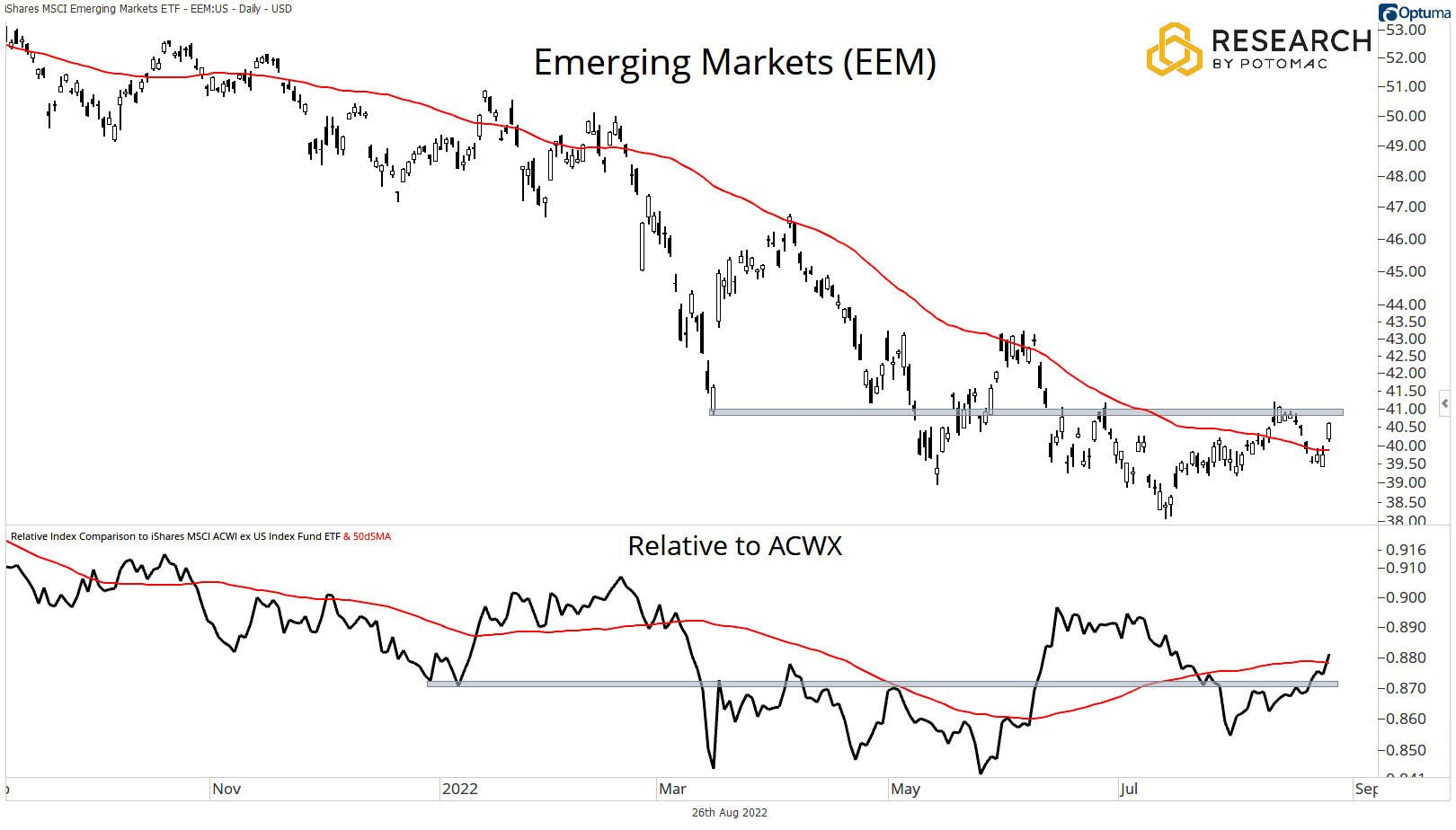
*Data via Optuma as of the close of trading 8/25/22
Disclosure: This information is prepared for general information only and should not be considered as individual investment advice nor as a solicitation to buy or offer to sell any securities. This material does not constitute any representation as to the suitability or appropriateness of any investment advisory program or security. Please visit our FULL DISCLOSURE page.
